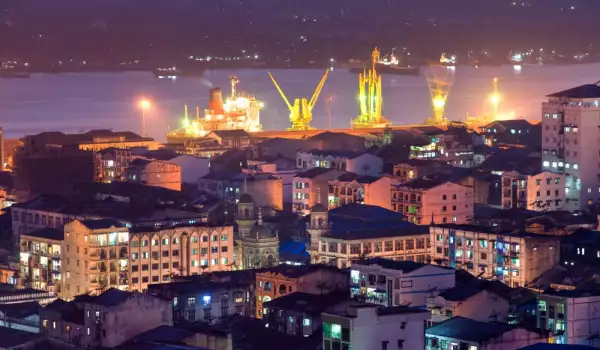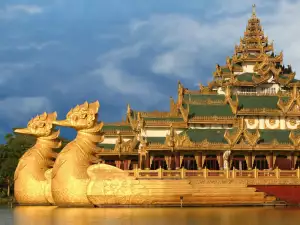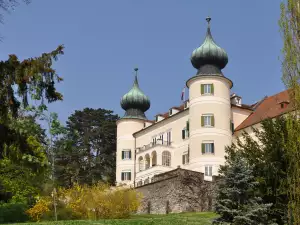Yangon

The picturesque Yangon is undoubtedly the jewel of Myanmar (Burma). In the four million city, visitors have the opportunity to enjoy the sights of architecture and unparalleled performance with anywhere else.
The former capital of Myanmar entertains residents and visitors with a lot of tropical foliage, expansive parks and beautiful lakes, which earned it the nickname the East Garden. The city has over 15 centuries of history.
The place is unique for several reasons. For starters it should be noted that Yangon is the most developed city in industrial and infrastructural terms. This, in turn gives a more authentic and untouched by modernity and commerciality Asian type of city. The second beauty of Yangon is predetermined by the cultural and religious mix, created by the Buddhist, Muslim and Christian population of the city.
The Asian pearl is associated mainly with its brightest sight - the Shwedagon Pagoda, also called the "Golden Pagoda". The near 100 meters high unique building is located west of Kandawgyi Lake. The temple is considered the most respected Buddhist pagoda in Burma. In fact, few people are familiar with the meaning of the word "pagoda". The definition is given to a cascade of high buildings, usually characteristic of the Asian type of religious places. The impressive temple, which can be seen from anywhere in Yangon, was constructed in the 6th century. The story of the pagoda is actually the story of Yangon, because it was built immediately after creation of the city. Many define it as a world church miracle. Gold used for lining the temple is approximately nine tons. On top of the pagoda are many exquisite gems.
Tributes to Buddha and the locals are expressed through another impressive building - Chaukhtatgyi Pagoda. The sacred place recreates the image of Buddha lying. The towering figure is over 70 meters long and was built early last century, repeatedly having been cared for and renovated. Buddha's feet are labeled with fancy glass mosaic.
In Yangon there are several pagodas - Sule Pagoda, Kyauktawgyi Pagoda and Botahtaung Pagoda.

Another unique attraction is the city Karaweik Hall. The attraction has huge sculptures of mythical creatures, like flying birds. Inside is a ceremonial hall. Karaweik’s creatures were built in 1972 and about 20 years ago, the mythical creatures are gilded. Their territory has a restaurant offering a variety of culinary delights at affordable prices.
Next to the architecture in the "mystical" style in Yangon rise many buildings in typical Western European style. British colonists were present in the city during the 19th century and built many beautiful buildings with administrative functions. Among them are City Hall, the Supreme Court building service port and the former building of the railways (Mee Ya Htar building). Characteristic of these buildings are their red walls.
Descendants of Britain left behind the beautiful St Mary and Holy Trinity Anglican Cathedral.
There are several areas that deserve tourist attention. They are Hlawga Wildlife Park and the Htaukkyant war cemetery. Fans of museums can visit the Bogyoke Aung San Museum, Museum of History, National Museum and the Museum of precious stones.
In 2006, Burma's military government decided to move the capital from Yangon to Naypyidaw. However, this does not change the fact that Yagon is the largest city in Burma. Today, this Asian city continues to perform important commercial and administrative functions.
As for shopping, a major tourist destination is the Bogyoke Market. There is literally everything - from souvenirs and traditional works of art to antiques, tapestries, precious stones and fine jewelry, all made by local artisans.
The food is the Asian delicious blend of Chinese and Indian dishes. Also in the Asian city are several distinct restaurants with European cuisine.









